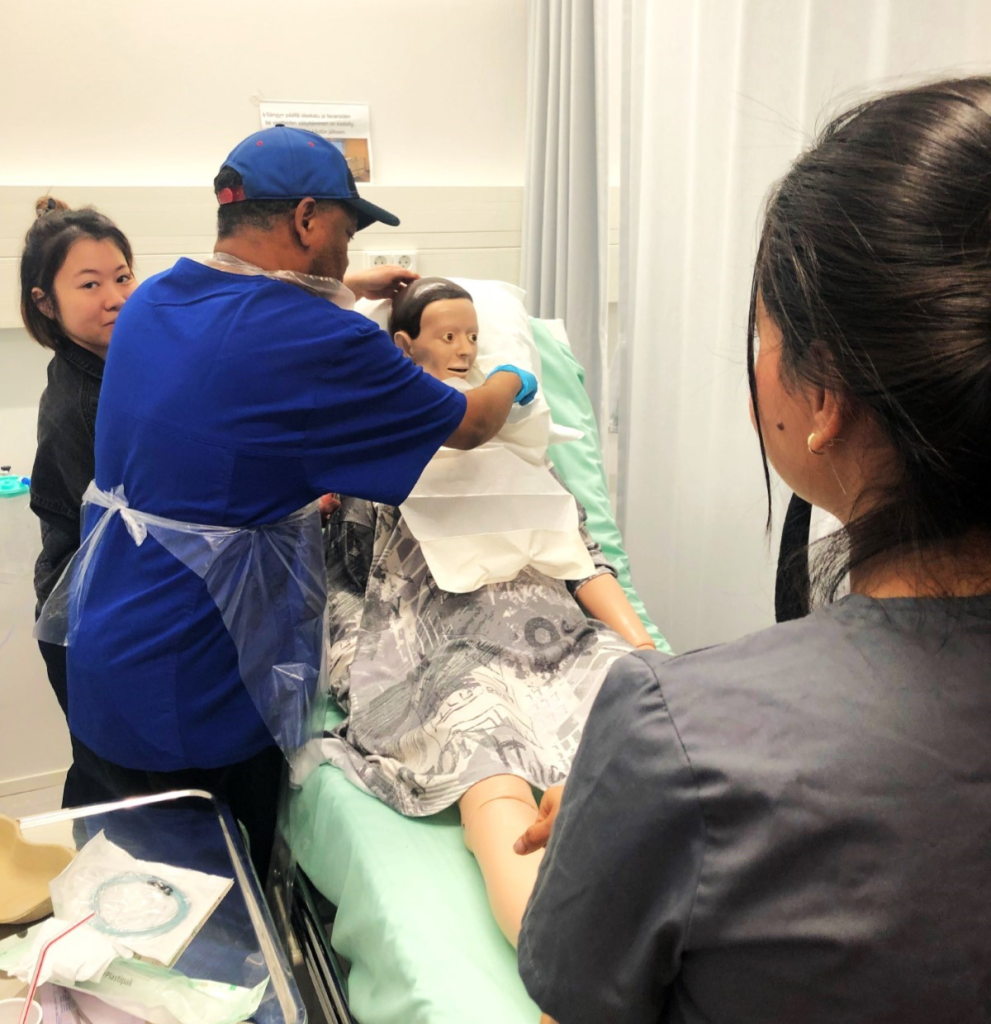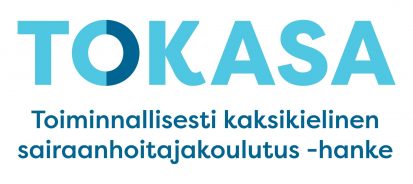An educational setting where language learning and professional skills development are integrated throughout higher education helps ensure that students are not only highly skilled but also have the functional language knowledge necessary to enter the workforce smoothly and integrate effectively into the workplace. In the Finnish Healthcare setting, international/TOKASA students not only have to communicate with their clinical instructors, but they must interact and communicate with patients during their clinical practices as well.
During these placements, Finnish language becomes the primary language of instruction. Although students understand theoretical concepts, learning practical clinical skills require effective communication in Finnish. However, the pace of language learning is individualized and varies among students with listening, speaking, writing, and reading, developing at different rates for different learners.
Language Focused On-Campus training
Keeping these aspects in mind and students’ varied learning styles, Language Focused On-Campus training (LFCT) was conceptualized in Metropolia University of Applied Sciences in 2024 for students who had diverse levels of Finnish language. Both substance and language teachers created simulated healthcare environments including; in- and out-patient units, emergency units and specialized areas such as; Gastrointestinal, cardiothoracic, and surgical units. On-campus training required creativity from teachers, who played different professional roles (head nurse, doctor, patient etc.) during different simulations. Language and substance teachers worked closely to create various experiential learning scenarios, such as clinical environment escape rooms, creating an engaging and interactive learning environment for all students.
Real healthcare settings were simulated together with the help of different third parties including patient organizations, public and private hospitals, and specialized clinics. Students practiced their clinical skills on ”volunteer patients” provided by the patient organizations. The students conducted basic health checkups and took non-invasive tests such as EKGs from the patients in Finnish, allowing them to also practice their language skills in a real-world setting. During “patient” visits, both the substance and Finnish language teachers were present and provided guidance to the students. Along with language, visits to the hospitals and clinics allowed the students to see Finnish work culture in action and gave the students a low-threshold introduction to the field-based clinical placement.

During the on-campus training many students showed improvements in their language skills but also in their confidence to use Finnish in different patient-care situations. Students practiced giving and receiving reports in Finnish as well as consulting other healthcare professionals and communicating across an interdisciplinary team, ensuring safer continuity of care. After the training, some students reported that the training helped them use the language more fluently, with one student even advancing from A2 to B1 level. The training also improved the students’ clinical skills, increasing their confidence as future nurses.
Challenges, improvements and the next steps for language-focused on-campus training
Whilst overall the language-focused on-campus training received positive feedback, there were some challenges that arose. The training faced challenges especially in arranging activities, simulating different clinical scenarios and accommodating the varying Finnish language proficiency levels of students.
Arranging and scheduling activities, most of which relied on third-party cooperations, such as opetuspotilaat (volunteer patients) and opintokäynnit (study visits) was challenging. Each of these external activities needed to be scheduled individually, and then pieced together to create a cohesive timetable that worked for all parties involved. Moving on, pre-scheduling coordination meetings with partners before the semester begins can help align availability and address constraints early.
Simulating different clinical scenarios required additional effort from the teachers to ensure sufficient training scenarios for all. This required adjustments to the patient cases to make them more generalized and suitable for all. To address this difficulty, patient cases can be developed at varying levels of complexity, tailored to the students’ clinical experience. Beginner scenarios can focus on basic patient assessment and care, while advanced cases can involve complex decision-making and critical thinking. Additionally, collaboration among teachers from different specializations can help create simulations that include aspects of various clinical sites, providing a broader perspective while keeping cases relevant for all students. The varying levels of language amongst the students required teachers to plan individual goals for each student. This remains part of language learning but preparing for this is recommended.
Overall, LFCT creates a new opportunity for students who are still learning the language to practice their clinical skills and improve their confidence of Finnish language use, preparing them for future clinical practices in the hospitals and health care centers. With LFCT, Metropolia ensures that their students are prepared for real-world situations and feel more ready to enter working life in Finland.
As we continue with language-focused on-campus training, we would like to thank our collaborators who helped in our first ever TOKASA language focused on campus training module; NephroCare Dialysis centre, HUS Siltasairaala, Redcross Finland, Espoo Hospital, Aalto University Neuroimaging Department, Pihlajalinna Lääkärikeskus, students from Helsingin Suomalainen yhteiskoulu, retired language teachers and last but not the least our volunteers from Finnish patient organizations .
This blog has been written by Linda Dinda & Sumera Sheikh, Lecturers of TOKASA program, Metropolia University of Applied Sciences
